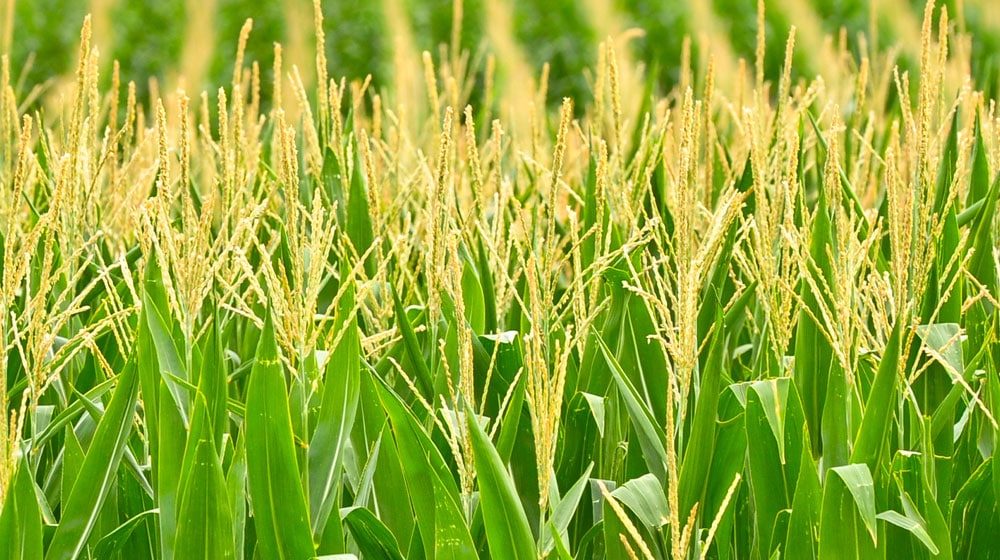Towards the end of May, maize was trading at around Rs. 4,050-4,500 per maund, close to wheat as prices have always been decided historically.
In the next two weeks, the prices dropped to Rs. 1,800-2,350 per maund while wheat remained the same.
Since then its prices have recovered to around Rs. 2,350-2,750, but it is still nearly half of the wheat prices which is unusual. One sentiment in the market is that the same thing is happening with maize that happened with wheat. The large difference in price range is because of differences in local markets across the province and no central trading framework in place.
Reportedly, wheat prices were driven down intentionally by big players by forcing farmers to sell and now farmers are out of the market. Farmers who were unable to store wheat out of financial need or lacked solid warehouses to save it from rains, sold and got out. Farmers say it’s the practice that repeats every year.
On the other hand, when talking with agriculture department officials, they admit that persistent government intervention is responsible for farmers’ plight otherwise prices would have stabilized long ago. But there is no government support price or regulation for even name’s sake in the case of maize. So what’s happening here?
As you might already know, nearly 65 percent of maize production goes to the poultry feed mills, and an estimated 15 percent is procured by wet-milling processors like Rafhan Maize Products Company. Although, with a corporate model built over it, one would accept a supply chain somewhat similar to sugarcane, that’s not entirely true.
There are some 350-plus registered and unregistered feed mills in Pakistan that fuel the Rs. 1.5 trillion poultry industry which is roughly three times the size of the sugar sector. These mills do set daily rates for maize just like sugar mills but unlike sugarcane, its majority is not procured directly but by investors on behalf of feed mills.
These investors are in contact with the brokers on the ground who then procures maize from the farmers. They also take various reasonable and unreasonable cuts per bag and with all of that, the farmer gets Rs. 200-250 less compared to the rate announced by feed mills. On top of that, this clout in the middle is being blamed for driving the prices up and down against the market forces for their benefit.
The reason for this dinged-up supply chain is that since feed mills avoid paying cash just like their counterparts in the sugar industry, investors buy maize on their behalf and take their commission. There is another lot of hoarders one will find in grain markets and Facebook groups who spread the fake market sentiment and tempt farmers into selling.
We have advised the farmers to hold their maize till after Eid as we hope that prices will settle at around Rs. 3,500 which is its right price per market circumstances” stated Usman Mahar, founder of Roshan Kisaan community where farmers strive to get better prices in buying and selling products as a cooperative.
Mahar argued that when farmers were getting good profits by selling maize as silage (forage), the price of maize grain was artificially pumped up to Rs. 5,000 in some places to lure farmers away from silage and after the time for silage passed, the prices were cut down on daily basis.
But there is another argument for the sudden low pricing and that is this year’s average maize yield which has crossed 140 maunds per acre in some areas. Traders we talked to say that this highest-ever maize productivity coupled with increased moisture levels due to prevailing humid weather conditions has caused a sudden drop in prices rather than some artificial price game.
“There should be either a maize support price or the government should provide the inputs at a controlled pricing in order to protect the farmers”, argued Ali Hamed of the Australian Center of International Agriculture Research (ACIAR). He added that while he is usually against government intervention, our market system still needs some kind of regulations.
He said that what’s different this year is that farmers are gradually getting conscious of their own interests as they attempt to store maize in the form of cobs within their limited resources, which is a good thing.
But the most interesting takeaway from all this is that farmers get the final hit regardless if the government is intervening and regulating or if it’s letting the market forces take their course. The reason is that the government as a regulator is not efficient or transparent but in some cases worse than the existing system.
The government has no framework to prevent collusion across the scattered markets in a few hundred cities, but it will claim to regulate prices on two million retail shops. Countries around the world do boast free market policies, but our market system is too broken to let play around.
On the other hand, farmers’ organizations argued that maize exports should be allowed especially since the historical rise in international market prices. But businessmen are already exporting and although there is a lack of public data on maize exports, there have been more than 3000 shipments reported this year. Though farmers argue that is insignificant and that current government policies are favoring traders and not farmers.
While the country is generating enough maize, poultry producers would disagree with extensively exporting maize as government has a history of getting its information wrong and later importing the commodity.






















3000 shipments? Normal shipment is 60000 tons? Data needs recheck.
That’s not how a shipment is defined necessarily. It is generally a single export order or a movement of goods from one place to another
There is a need to establish farmers markets, at a defined 1~2% profit margins, which should only take care of the transportation, storage and managerial costs. This middleman or Aarti system is exploitative and needs to be abolished in totality